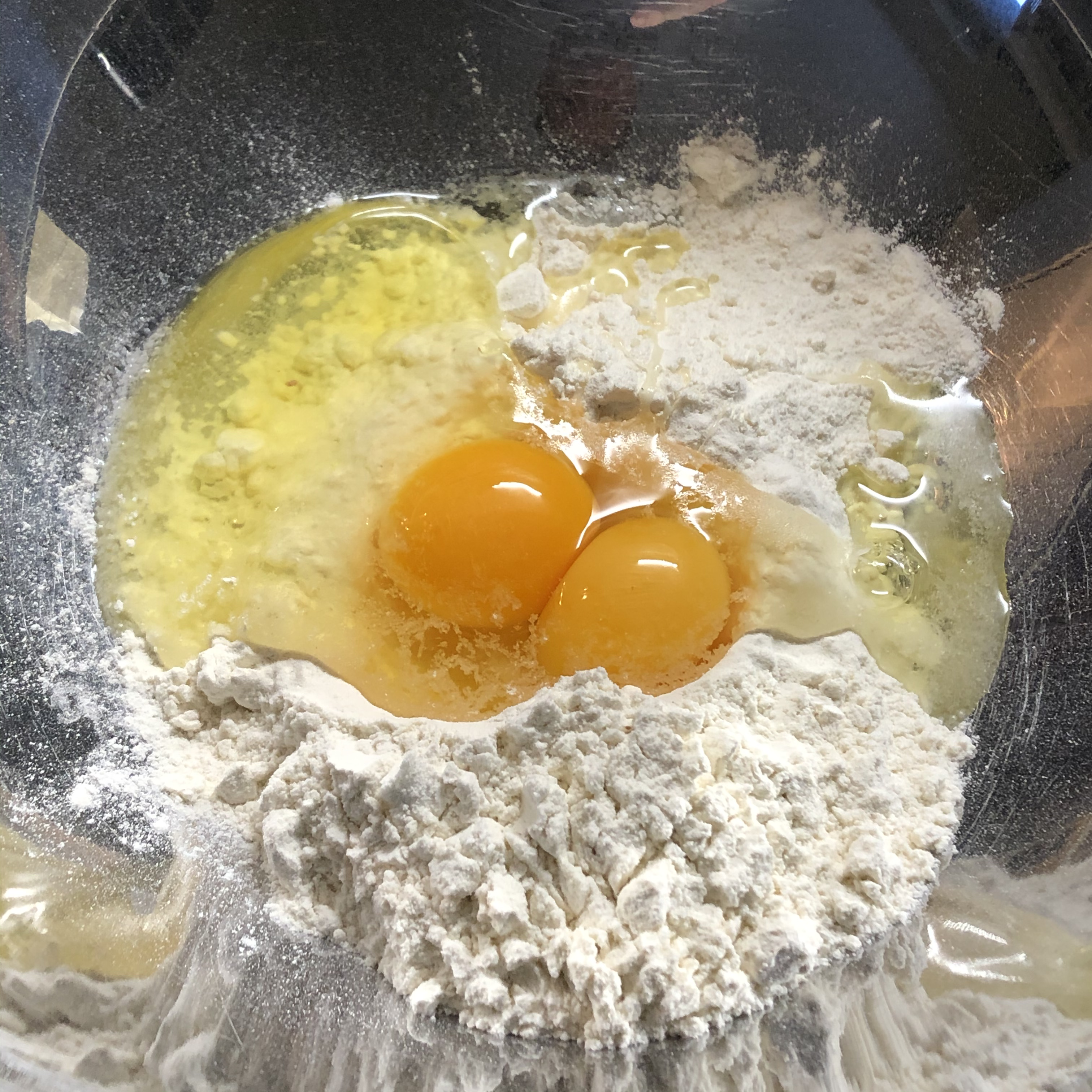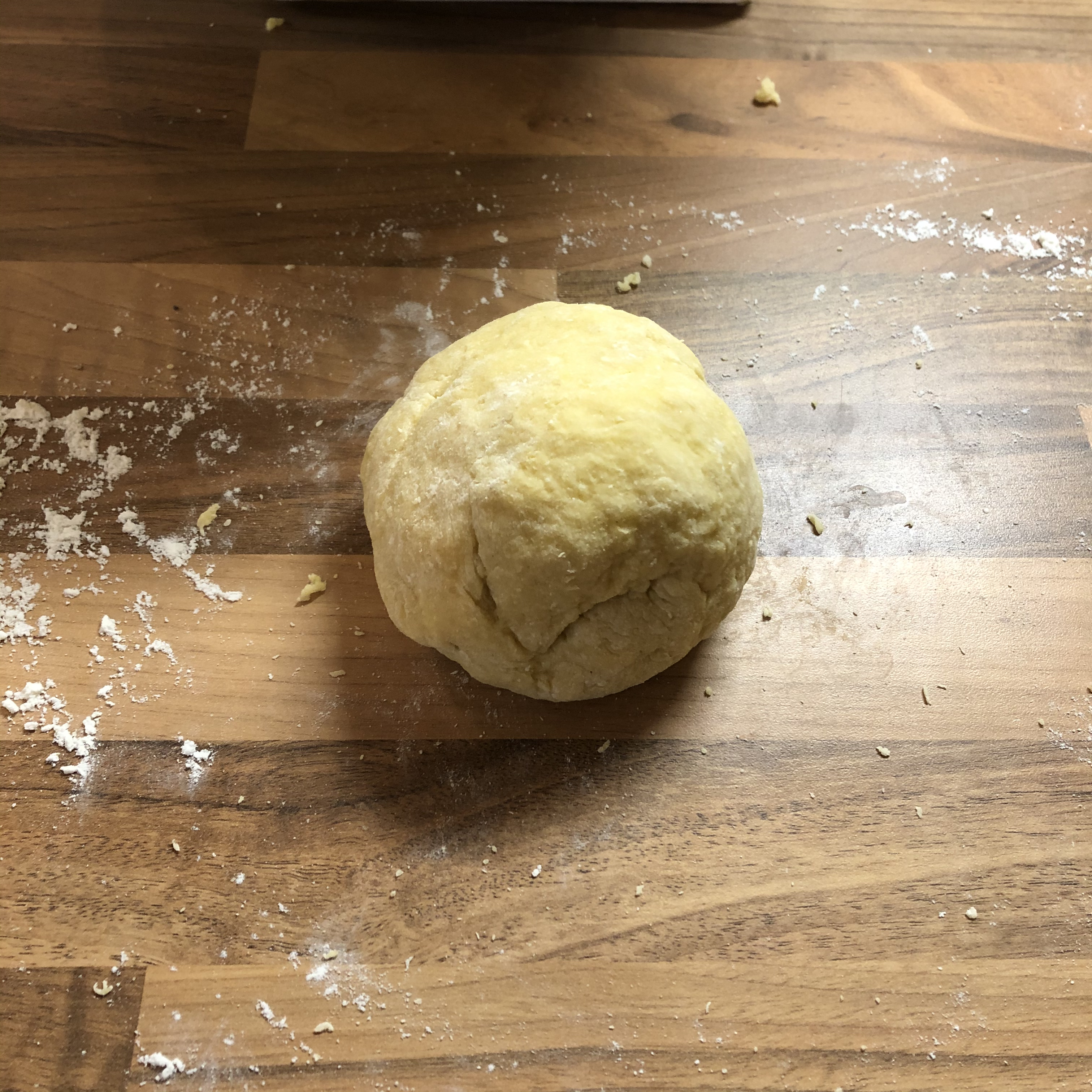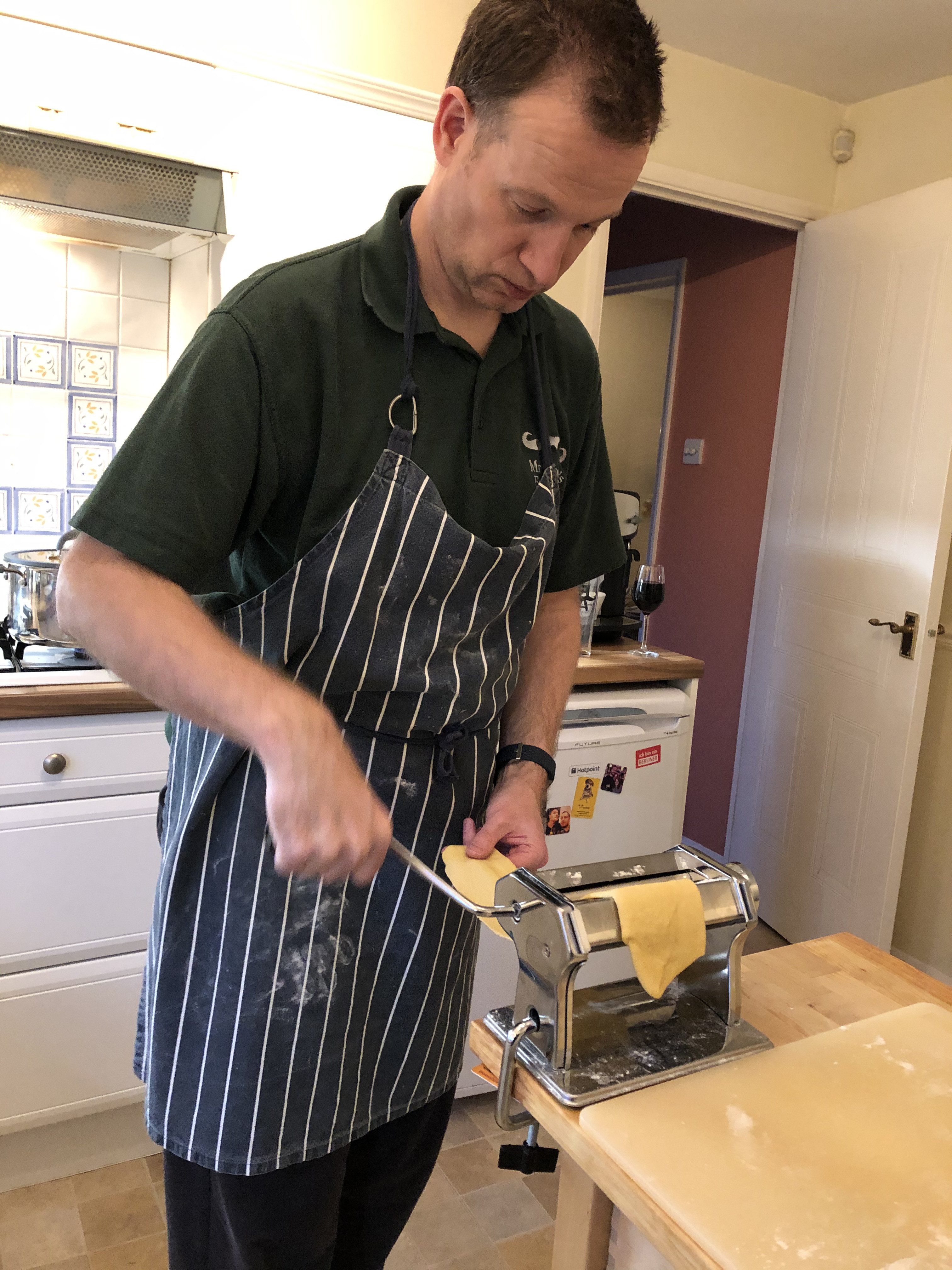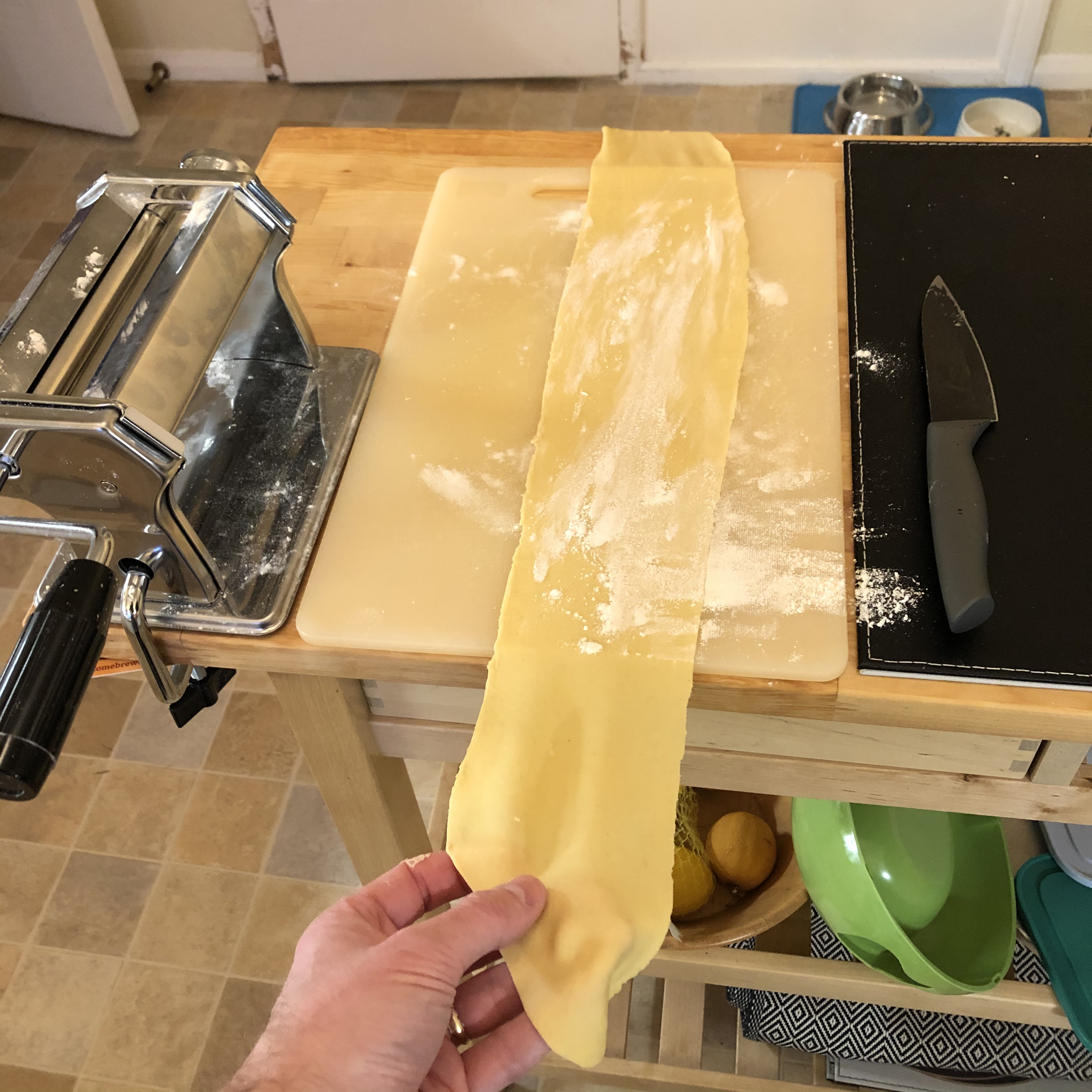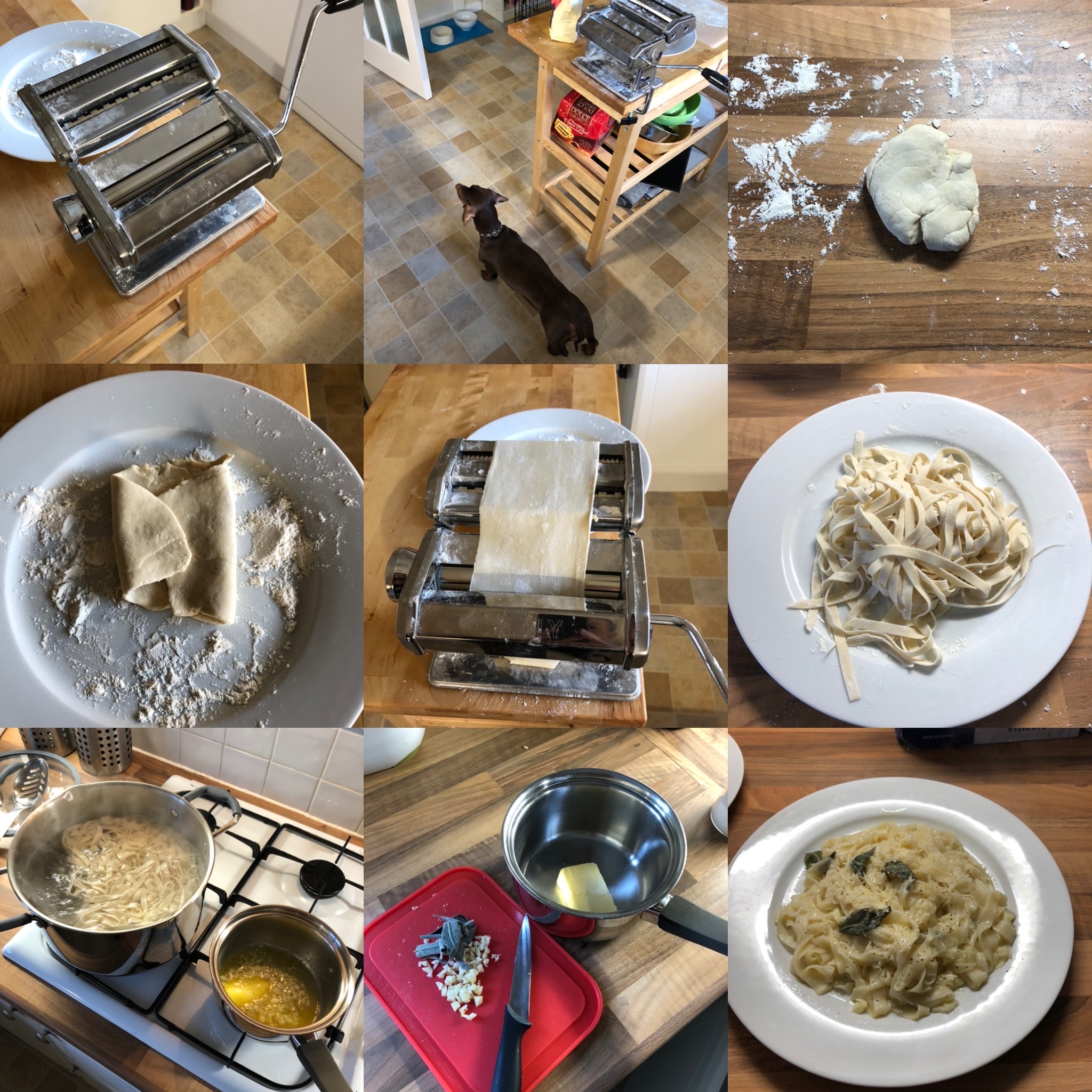RaH#5 - Making Pasta
In this series, we have already had three pasta dishes and in two, I made the pasta from scratch. In a carbonara, the pasta should be spaghetti or rigatoni. I think rigatoni is better because the meat gets into the tubes. In a traditional ragù, the sauce is used to dress the pasta and the meat is served as a second course. I also made tagliatteli bolognese where absolutely you must not use spaghetti.
In this article, I will show you how I make pasta. It's based on a lesson I had in Rome in 2019. If you ever have an opportunity to take a cooking lesson from a professional, do it. I learnt more about cooking in the two hours or so than I did in the year prior to it.
To make pasta you need eggs and flour. I use large eggs and I let them come up to room temperature before I start. I have found that this is essential - you want the mix to be at room temperature to get the glutens and processes working in the pasta. In the lesson in Rome, we used one egg and 100g of Semolina flour per portion. I have found it difficult to get the right grade of flour in supermarkets, but Sainsbury's OO pasta flour is what I use. I've also found I need less of it, otherwise I ended up with a tougher dough.
Fresh egg pasta per portion 1 egg 90g OO grade pasta flour, potentially more and some for dusting Extra virgin olive oil
Of course, one portion of pasta will be different to another and one egg will be different to another. You need to get used to the feel of it. Start by putting the flour in a bowl, make a well and crack in the eggs in the middle. I'm going to make two portions here.
Using your fingers, break up the eggs and whisk them, then fold them into the flour. I've had more success by making more contact with the dry flour early on - otherwise, you will end up with lots of wet flour on your hands. Make sure you get everything into the bowl from your hands and work the flour into a dough. Eventually, it will no longer be sticky and it will be possible to make it into a smooth dough. I'm still a beginner at this and my dough at this stage does not look as smooth as it could be, but it doesn't seem to matter in the end. At this point, it's time to adjust it a bit. I always add a little bit of extra virgin olive oil and mix it in. If the dough is a little too sticky, you can add a bit more flour.
Take it out of the bowl and knead it on a floured surface, folding it around to encourage the glutens to develop. Then roll it back into a ball. Cover the dough with a damp tea towel and put it in the fridge for at least 15 minutes to rest. Get your pasta roller at the ready. You can get one of these for under £50 and they come with attachments for ravioli, linguine and tagliatelle. We are going to make tagliatelle.
The first time you use the machine, you will need to use a sacrificial piece of pasta dough to clean it. Once clean, you just need to keep it floured. Fetch the pasta from the fridge and knead it again. Then break it into chunks. In my case, I'm going to break it into four equal chunks. Taking a chunk in my hand, I work it to bring it up to room temperature. On a floured surface, I flatten it and then I roll it on setting 1. I fold it horizontally (as shown) and then roll it the other way. I do this a couple of times. I then roll it on setting 2. You can do this as many times as you want. In fact, I've found that the rolling can "forgive" problems with the dough. If your dough is falling apart, make it into a ball and start again. Once you are experienced, you won't need to do this.
Then on setting 7, I roll the sheet out. You can go via an intermediate setting if you like. I would not go higher than setting 7 for tagliatelle. Keep the dough floured and use the tagliatelle cutter to make the noodles. Repeat with the other chunks.
Put the output on a tray, well floured and keep the noodles well floured so they don't stick together. Cover in clingfilm and put in the fridge until you need to use them, but this should be the same day really. I've yet to experiment, but I'm sure they could be vacuum packed and kept for longer.
To cook, bring a large pan of salted water to the boil. Drop in the pasta. When it starts to float and goes paler in colour, it is beginning to cook. My tagliatelle needed four minutes allowing for a minute for it to be dressed in the sauce.
It feels like a lot of work, but it is cheap and exceptionally delicious. The only thing you lose is a bit of time.
If you make this earlier in the day, you can keep the pasta in the fridge until you need it hours in advance. All the mess can be dealt with as well. With a sauce made in advance too, you can quickly made a dinner without having to do very much in the kitchen near the time you want to eat.
Now vegans: the egg can be replaced with approximately 25-40ml water and I tried this recently for the purposes of the article. Start with less water than you think you need. I found that the pasta cooked a bit quicker and was a bit mushier, so I need to have another go. Perhaps I rolled the pasta a bit thin, but it is just as easy to make.
Here is a picture of my pasta with flour and water process. I went non-vegan at the end with a butter, sage and garlic sauce. This is an incredibly simple sauce to make - just melt butter with garlic, take it off the heat and add sage leaves to infuse for a couple of minutes.

